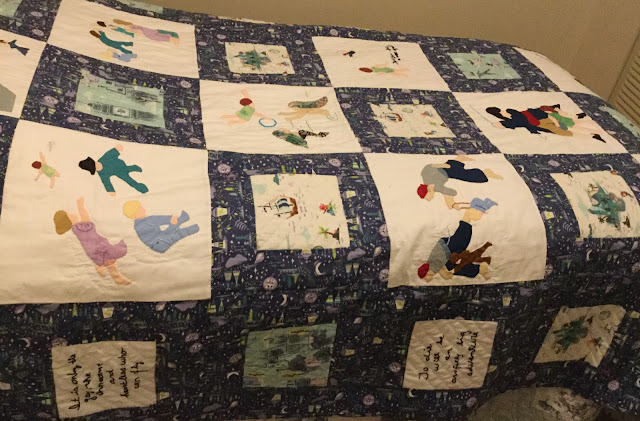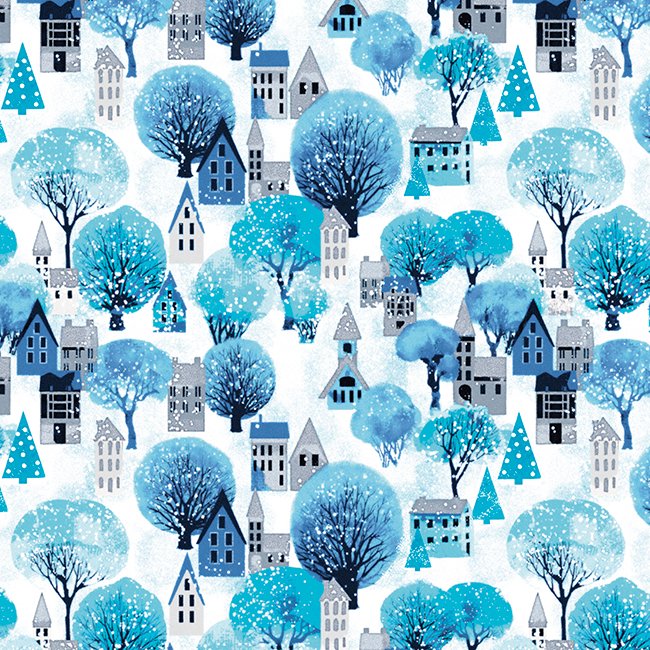Here is a breakdown of my reading, not presented in any particular order except category. You can find my reviews by typing the book title in the search bar on the right side of the blog homepage. Some of the books I read in 2018 will be published in 2019. I have marked them with a *.
My reading was still heavy on current political and social issues, represented by nonfiction and fiction choices.
American History & Politics
My choices favored my interest in Revolutionary War, WWI and WWII eras, and the 1960s.
Rush by Stephen Fried
The First Ladies of the Republic by Jeanne E. Abrams
Frank & Al by Terry Golway
In the Hurricane's Eye by Nathaniel Philbrick
LBJ's 1968 by Kyle Longley
The Assassination of Robert F. Kennedy by Tim Tate
The Hidden White House by Robert Klara
The Man Who Walked Backwards by Ben Montgomery
Wasn't That a Time by Jesse Jarnow
A Force So Swift by Kevin Peraino
American Inventors and Business
The great creative thinkers and the influence of business and industry on society
Tesla Inventor of the Modern by Richard Munson
Atom Bomb to Santa Claus by Trevor Homer
Wanamaker's Temple by Nicole C. Kirk
American Advertising Cookbooks by Christina Ward
Janesville by Amy Goldstein
Voices From the Rust Belt by Anne Trubeck
True Adventure
The girl in me loves a story of survival against the odds
Adrift by Brian Murphy
White Darkness by David Grann
To the Edges of the Earth by Edward J. Larson
Books on the Current Political Climate
Some pretty scary stuff!
Fire and Fury by Michael Wolfe
Fear by Bob Woodward
How Democracies Die by Steven Levitsky
The Splintering of the American Mind by William Eggerton
Identity by Frances Fukuyama
Books on Inclusion and Justice
Immigration, Civil Rights for all, economic parity
Lighting the Fires of Freedom by Janet Dewart Bell
A Bigger Table by John Pavlovitch
The Opposite of Hate by Sally Kohn
Killers of the Flower Moon by David Grann
Patriot Number One in Chinatown by Lauren Hilgers\
Give People Money by Anne Lowry
Journeys An American Story by Andrew Tisch
British History
Queen Victoria by Lucy Worsley
Memoirs & Autobiographies
Inspiring stories!
The Sun Does Shine by Ray Hinton
Song in a Weary Throat by Pauli Murray
Together at the Table by Karen Oliveto
Tomorrow Will Be Different by Sarah McBride
Surrendering My Ordination by J. Philip Wogaman
The Right to Be Cold by Sheila Watt-Cloutier
My Dead Parents by Anya Yurchyshyn
Call Me American by Abdi Nohr Ifrin
Calypso by David Sedaris
Becoming by Michelle Obama
Environmentalism
The Poisoned City by Anna Clark
Overrun by Andrew Reeves*
The Water Will Come by Jeff Goodell
LGBT Themed Fiction
Southernmost by Silas House
Tin Man by Sarah Winman
A Ladder to the Sky by John Boyne
Sugar Run by Mesha Maren*
Multicultural Fiction
Many are historical fiction. All offer insight into the human experience.
An American Marriage by Tayari Jones
I Have Lost My Way by Gaye Foreman
Gateway to the Moon by Mary Morris
Waking Lions by Ayelet Gundar-Goshen
Sing, Unburied, Sing by Jesmyn Ward
The Mercy Seat by Elizabeth Hartley Winthrop
The House of Broken Angels by Luis Alberto Urrea
The Tea Girl of Hummingbird Lane by Lisa See
The House of Rougeaux by Jenny Jaeckel
Half Gods by Akil Kumarasamy
There There by Tommy Orange
We Hope for Better Things by Erin Bartels
All the Lives We Never Lived by Anuradha Roy
The Tyre by C. J. Dubois
Things Fall Apart by Chinua Achebe
Historical Fiction About Women
The eternal and timeless experience of being female.
Learning to See* by Elsie Hooper
The Falconer* by Dana Czapnik
The Last Year of the War* by Susan Meissner
The Only Woman in the Room* by Marie Benedict
Marlena by Julie Buntin
The Latecomers by Helen Klein Ross
Once Upon a River by Bonnie Jo Campbell
Burial Rites by Hannah Kent
Sold on a Monday by Kristina McMorris
A Cloud in the Shape of a Girl by Jean Thompson
Transcription by Kate Atkinson
A View of the Empire by Sunset by Caryl Phillips
Invitation to a Bonfire by Adrienne Celt
The Only Story by Julian Barnes
The River by Starlight by Ellen Notbohm
The Red Address Book by Sofia Lundberg
Island of Sea Women* by Lisa See
Historical Fiction
Vividly bringing the past to life through fiction.
The Winter Soldier by Daniel Mason
So Much Life Left Over by Louis de Bernieres
The Wreckage of Eden by Norman Lock (a story about Emily Dickinson)
A Long Island Story by Rick Gekoski (set in the McCarthy era)
Warlight by Michael Ondaatje
Lincoln in the Bardo by George Saunders
The Italian Party by Christina Lynch
Dust by Mark Thompson
I Will Send Rain by Rae Meadows
West by Carys Davies
The Perilous Adventures of the Cowboy King by Jerome Charyn* (A novel about Teddy Roosevelt)
Sea Chase by John Braddock (Young readers fiction about John Quincy Adams)
Gilead by Marilynne Robinson
Historical Fiction with Fantasy Elements
The Cassandra* by Sharma Shields
The Bird King* by G. Willow Wilson
Ahab's Return by Jeffrey Ford
A Boy in His Winter by Norman Lock
Farewell Summer by Ray Bradbury
Killing Commendatore by Haruki Murakami
Once Upon a River by Diane Setterfield
Fantasy
Circe by Madeline Miller
The Winter of the Witch by Katherine Arden
Science Fiction
Unholy Land by Tidhar Lavie
Flowers for Algernon by Daniel Keys
Mysteries and Suspense
The Garden of Blue Roses by Michael Barsa
An Anonymous Girl* by Greer Henricks and Sarah Pekkanen
Bring Me Back by A. B. Paris
Jack Was Here by Christopher Bardsley
The Ancient Nine by Ian Smith
Siracusa by Delia Ephron
The Marsh King's Daughter by Karen Dionne
Truly, Madly Guilty by Lianne Moriarity
Feared by Lisa Scottoline
After Anna by Lisa Scottoline
Dead Bomb Bingo Ray by Jeff Johnson
Death in Paris by Emelia Bernhard
Mystery in White by J. Jefferson Farjeon
Marne by Winston Graham
Literary Fiction
Northanger Abbey by Jane Austen
Tinkers* by Paul Harding
Nothing But the Night* by John Williams
Laurentian Divide by Sarah Stonich
Vacationland by Sarah Stonich
Virgil Wander by Leif Enger
Florence Gordon by Brian Morton
Ohio by Stephen Markey
A Land More Kind Than Home by Wiley Cash
The Rain Watcher by Tatiana de Rosnay
Meet Me At the Museum by Anne Youngson
A Collar for Cerebus by Matt Stanley
All We Ever Wanted by Ellen Giffin
The Red Thread by Ann Hood
How to Walk Away by Katherine Center
Hard Cider by Barbara Stark-Nemon
The Family Tabor by Cherie Wolas
Clock Dance by Anne Tyler
The Dependents by Katherine Dion
The Italian Teacher by Tom Rachman
Laura and Emma by Kate Greathead
Maria on the Moon by Louise Beech
Stoner by John Williams
The Promise Between Us by Barbara Claypool White
The Mystery by Matthew Mackintosh
Retellings of Classics
Eligible by Curtis Sittenfeld
Mary B by Katherine B. Chen
Humorous Novels
Limelight by Amy Poepple
#HockeyStrong by Erika Roebuck
High Noon in Hollywood by Warren Adler
Standard Deviation by Katherine Heiny
The Norma Conquest by Warren Adler
Short Stories
You Think It, I'll Say It by Curtis Sittenfeld
Collected Stories by Susan Sontag
We Are Gathered by Jamie Weisman
A Beautiful Place to Die by Sam Bigglesworth
Humor
Lessons From Lucy by Dave Barry
I See Life Through Rose Colored Glasses by Lisa Scottoline
Nonfiction Inspiration
The Dark Interval by Rainer Maria Rilke
A Glad Obedience* by Walter Brueggemann
Poetry
The Flame by Leonard Cohen
Books About Books and Writers and Artists
Meg Jo Beth Amy by Anne Rioux Boyd
J. D. Salinger and the Nazis by Eberhard Alsen
Whistler's Mother by Daniel Southerland
The Rise and Fall of Adam and Eve by Stephen Greenblatt
Louisa At the Front Lines* by Samantha Seiple
Jane Austen for Kids* by Nancy Sanders
Guilty Thing by Frances Wilson
The Library Book by Susan Orlean
Simply Austen by Joan Klingel Ray
The Man Who Wrote the Perfect Novel by Charles J. Shields
The Rise and Fall of Adam and Eve by Stephen Greenblatt

Books About Quilts
Pattern books and quilt histories
An American Quilt by Rachel May
Southern Quilts by Mary Kerr
Landscape Quilts by Ann Loveless
Oh Scrap by Lissa Alexander
Tilda Sewing by Heart
Pin Pals by Carrie Nelson
Quilt Big by Jemima Fiendt
My First Book of Sewing
Whimsical Wool Applique by Kim Schaefer
Creating Art Quilts with Panels by Joyce Hughes
Paint By Number Quilts by Kerry Foster
A Splendid Sampler 2 by Pat Sloan
Pat Sloan's Teach Me to Machine Quilt
Intuitive Color and Design
Allie Aller's Stained Glass Quilts
Stitches from the Yuletide by Kathy Schmitz
Patchwork Loves Embroidery Too
Red and White Quilts
Antique Needlework Tools by Dawn Cook Ronnigen
Art Quilts Unfolding
Genealogy
The Researchers Guide to American Genealogy
Art
Charlie Harper's Birds and Words
The Refrain of Thomas Cole*
Books I did not finish
Sight by Jesse Greengrass
Boomer 1 by Daniel Torday
Princess: The Early Life of Queen Elizabeth II
by Jane Dismore
Imagining Shakespeare's Wife: The Afterlife of Anne Hathaway by Katherine West Scheil
The King's Favorite by John Vance


























































